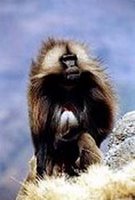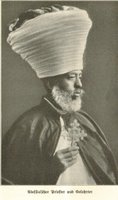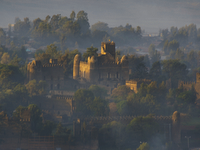 Bertuch's Bilderbuch was designed to teach German kids about the physical world such as these Ethiopian travelers and their environment, geography, flora and fauna. In the above hand-colored etching published in Bilderbuch fur Kinder between 1792-1810, the travelers are seen at rest somewhere in Ethiopia. Could you identify the details presented here and determine the locality, culture and who these people where? A keen analyst can determine by close study of the trees and vegetation, land, clothing, weapons and the domestic animal as well as the hut in the background. Check it out and comment about it! Double click on image for closer examination.
Bertuch's Bilderbuch was designed to teach German kids about the physical world such as these Ethiopian travelers and their environment, geography, flora and fauna. In the above hand-colored etching published in Bilderbuch fur Kinder between 1792-1810, the travelers are seen at rest somewhere in Ethiopia. Could you identify the details presented here and determine the locality, culture and who these people where? A keen analyst can determine by close study of the trees and vegetation, land, clothing, weapons and the domestic animal as well as the hut in the background. Check it out and comment about it! Double click on image for closer examination.TRANSLATION:from the German by Kebede Demissei Shell Petro-Chemical Engineer and Economist in Germany:
Notice about (Subject Matter) CXLVI/ Volume 7 No. 31
Abyssinians; Who are Taking A Rest on a Journey
Abyssinia is a great Kingdom on the Eastern coast of Central Africa; very mountainous but fertile and produces all sorts of agricultural products abundantly.
Although the population is of Arabic (Ethiopedia: Ethiopians are non-Arabic people) origin, most of the Abyssinians are followers of the Greek Christian Church (Ethiopedia: Ethiopian church is unique and closer to the Coptic Church of Egypt).
They are governed by a king called Negus (Ethiopedia: The country is governed by the emperor called Neguse Negest), who is an absolute ruler.
We did not know any pictures of the Abyssinians or of their traditional clothing and their customs. Thanks to the newest journey (around 1790) made by the English Lord Valentia and his companion Mr. Salt, this has become possible for the first time. Therefore, we are able to see in this picture traveling Abyssinians making a rest in a mountainous region of Abyssinia.
Their clothing consist of a white Shamma which is twisted around the body. Around both shoulders hangs sheep leather, without which no Abyssinian leaves his home. Their heads are not covered by anything. The upper class Abyssinians covers the lower part of the face with their Netelas. Their weapons consist of spears and shields. Only a few use a sort of rifle (loaded by the nozzle of rifle).
Their houses are huts with high pointed roofs like the one shown in the background of the picture.
When an Abyssinian gentleman travels, he is accompanied by a group of armed people. The picture shows most probably such an occasion. The horse (Ethiopedia: a mule) is reserved for the gentleman.








No comments:
Post a Comment